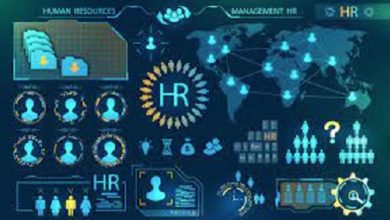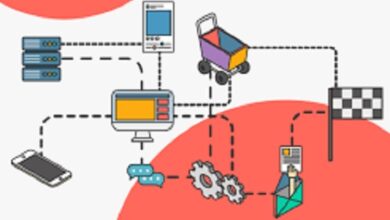Managing employee behavior with 10 tips
Managing employee behavior
In this article we will make you aware about Managing employee behavior with 10 tips.
1. Identify the profiles of each one
The first step in managing behavior correctly is to know in depth the behavioral profile of each employee . Tracing this profile can help the manager to identify, in a very objective way, how each professional reacts in different situations and which are the most striking features of their behavior.
But it is important to keep in mind that the manager will not always have direct contact with the employees , therefore, it will not be possible to make this identification through observation.
Therefore, in order not to rely on guesswork , the ideal is to invest in a mapping and profile analysis tool . It is a type of platform that uses questionnaires to separate professionals into groups: communicators, executors, planners and analysts. In addition, it points out a series of reactions and positions that they tend to take, enabling more planning for the management.
2. Make leaders aware of the importance of profiles
The behavioral management should not be limited to HR strategy . Therefore, it is essential that managers and leaders are aware of the importance of the tool and know the profiles of employees. So, talk to these people and explain that the behavioral profile can be used not only in meetings and discussions, but also in everyday life.
Knowing each profile, managers and leaders will be able to improve the distribution of tasks, demand for results and personal guidance, in addition to enabling more assertive planning and execution of goals.
In conclusion, it is HR’s task to ensure that all managers are aware of the results of the behavioral profile tests and know how to use this information in their respective areas.
3. Identify conflict spots
Identifying behavioral profiles can also be a good way to minimize conflicts and improve the company’s organizational climate . This is because, knowing each employee in depth, it is possible to understand which profiles complement each other and which do not tend to have a good working relationship.
In addition, the mapping also helps the manager to discover what characteristics are needed to lead that group of employees and what adaptations need to be made to enable more efficient management.
Thus, the tool is an excellent option to improve conflict management and build strategies focused on maintaining and preventing internal disagreements .
4. Promote balance
The secret to productivity and good results is in balance. Therefore, it is not a good idea to create teams and sectors with employees with identical profiles . This type of homogeneity tends to fail in the course of some important tasks for the development of the sector.
Thus, predominantly analytical areas may find it difficult to communicate their needs and achievements to the rest of the organization, for example. On the other hand, predominantly planning sectors end up failing in the speed of delivery and have difficulties in improvising solutions or acting creatively.
In the case of teams made up only of executors, there is a risk that the team ends up leaving aside some important details in the name of goals, which can create flaws in the process and require them to be redone. Groups of communicators, on the other hand, are great at selling, but they end up undermining other sectors in favor of their own work.
Therefore, to achieve the best possible scenario, it is essential to have a diverse team and count on the strengths of each profile, so that skills complement each other and limitations are resolved.
5. Encourage self-knowledge
Giving your employees time to think about their own goals and create self-fulfillment routes is also a way to manage team behavior.
When the company encourages self-knowledge and enables this personal and professional growth, it strengthens bonds and creates an environment of loyalty . Thus, professionals start to value the organization more and not only produce for their salary, but for the exchange of knowledge and answers they can obtain.
But to enable this growth, HR can act passively, only opening space for self-knowledge, or it can intervene, ensuring that professionals are heard and have their wishes and desires met.
In addition, it is worth investing in development programs , such as lectures, coaching sessions and experiences in other departments and units of the company.
6. Re-evaluate roles
Knowing the behavioral profiles of the team, it is possible to understand which functions fit best with each professional . Sometimes some tasks don’t sit well with certain people, while others would be performed much more productively .
Thus, it is possible to evaluate possible changes in roles , considering, in addition to the behavioral profile, the employee’s performance in that position. However, keep in mind that there is no such thing as black-and-white, that is, there are cases in which, even escaping the profile, the employee has an excellent performance and good results in the tasks performed.
Note that we are talking about specific roles, and not necessarily about job titles. We do not mean to say that you should change an engineer for a lawyer, but rather evaluate the routine of activities and tasks performed by the professional in order to understand their level of affinity with your profile.
7. Find departmental profiles
After analyzing each of the employees individually and reassessing roles and activities, it’s time to level up and begin the behavioral management of each of the departments.
For this, it is necessary to evaluate the performance and characteristics of each area and make the necessary adjustments. Therefore, identify the predominant profiles and the necessary balance levels in each sector and analyze the interaction between different departments based on their predominant characteristics, for example:
- more creative areas must have more communicators;
- operational sectors need good performers;
- departments that require long-term thinking must have more planners;
- sectors with tasks related to numbers and spreadsheets need good analysts.
With this in mind, try to find the predominant profiles in each of the company’s sectors and set goals in relation to them, checking the possibility of future hires.
8. Archive the collected data
In addition to developing comprehensive studies and drawing up strategic action plans based on behavioral profiles, it is essential that you maintain a data file for future reference.
Archiving all the results and tests, HR will be able to readjust its strategy whenever any team undergoes changes or when employees leave the company. But this data must be archived in an organized way and with backups, allowing quick queries and comparisons with other results periodically.
Finally, it is important to consider that it is unlikely that a contributor will change their profile radically , however, they tend to adjust their own personalities when new entries are opened.
9. Turn findings into data
We are in the era of metrics and big data , therefore, all information collected within a company must be used to inform decisions and evaluate performance. In the case of behavioral management, this is no different.
It’s no use just identifying the profile of employees and assigning new roles and positions based on them. It is also necessary to measure and compare performance and use this data for future reference.
This type of information will help in the creation of complex databases related to the productivity and performance of teams, in addition to enabling active comparisons that can be analyzed periodically and updated with each re-application of the tests.
Furthermore, this analysis will allow HR to be able to determine the ideal profile of each candidate when it comes to announcing a new position or replacing an employee, drawing up performance projections.
10. Create a follow-up and feedback routine
Finally, it is important that the behavioral mapping analysis is a way to improve the professional’s productivity and satisfaction , therefore, it should not be seen as a surveillance or adequacy tool. This means that the objective of the strategy is not to change the profile of employees, but to create possibilities to leverage what is best and make intelligent management.
In this scenario, it is important that the team has a clear and transparent idea of how they are being observed, evaluated and why the relocations of functions are taking place. A transparent management and awakens confidence is critical for employees to understand and accept the HR decisions, keeping your productivity.
In addition to mapping, it is important that HR creates a monthly or quarterly routine for the individual monitoring of each employee , helping professionals to identify and develop their areas for improvement.




